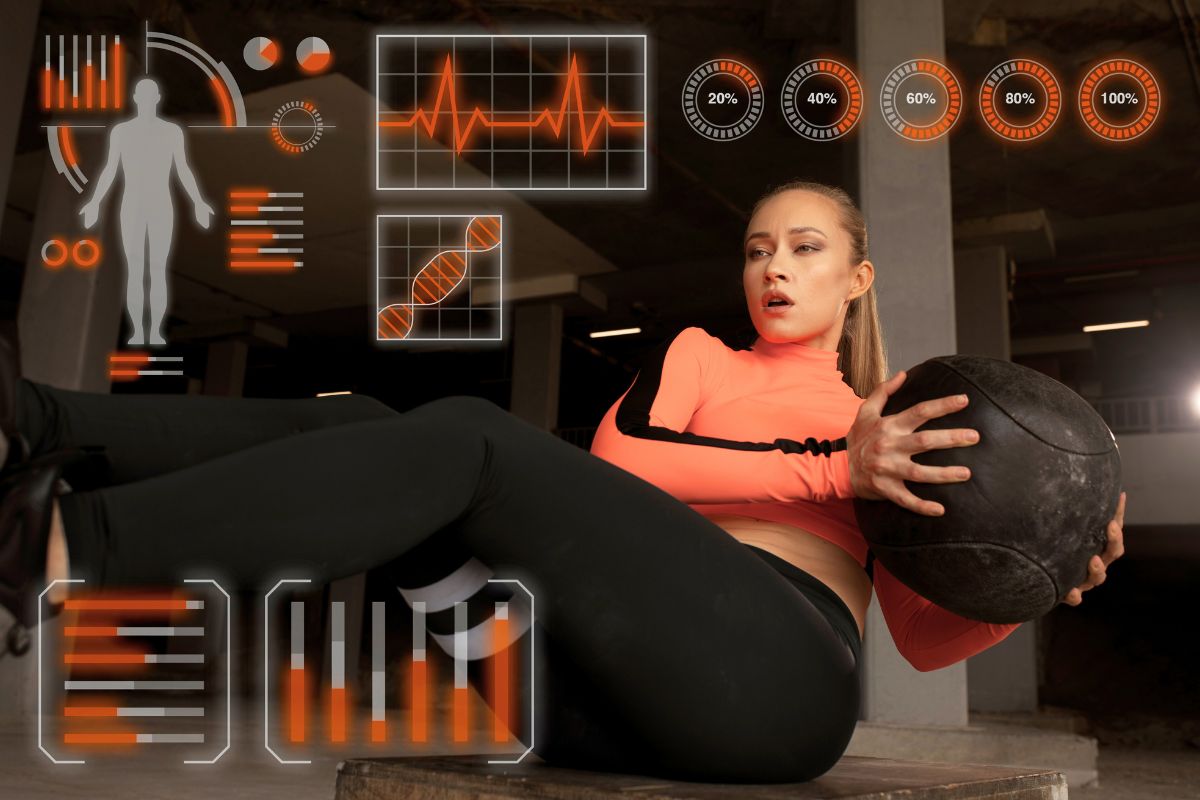How AI-Driven Injury Prevention Is Reshaping Professional Sports

In elite sports, staying healthy is as important as skill. Pro teams lose wins (and millions) when stars go down. For example, top soccer (football) clubs see roughly 50 time-loss injuries per season (about two per player). At any given time about 12% of the squad is sidelined by injury. Similarly, NBA teams battle frequent sprains and strains, and NFL rosters juggle concussions and joint injuries.
To combat this, clubs and leagues are turning to artificial intelligence (AI) and data-driven tools. Machine learning models, computer vision systems and high-tech wearables now monitor players continuously. These tools can flag fatigue or risky movements before they cause an injury. By predicting trouble in advance, coaches can tailor training, give extra rest or adjust technique. This keeps athletes on the field and extending careers.
Table of Contents
ToggleWhy AI Matters: Pattern Recognition And Personalization
AI’s promise in sports comes from its ability to sift through huge, complex datasets. Modern approaches combine data from many sources. Such as GPS trackers, heart-rate monitors, motion-capture cameras, even players’ past injury histories. It builds an individualized risk profile.
For example, an AI model might ingest a soccer player’s recent sprint counts, minutes played, sleep quality and past hamstring sprains. It then detects subtle patterns (e.g. gradually slower sprint speed or uneven stride) that a human might miss.
Such predictive AI risk modeling has shown real results. One case study of the Zone7 AI system (used by several pro football clubs) found it correctly forecast 72% of upcoming injuries at least a week in advance. These early warnings let teams proactively reduce practice load or isolate problem areas.
Tools Of The Trade: The Technologies Driving AI Prevention
Teams employ many types of AI technology in injury prevention, such as:
Wearable Trackers
GPS vests and inertial sensors worn in training capture each player’s distance, speed, acceleration and jump forces. For instance, STATSports’ Apex units (used by English Premier League clubs) record sprints, heart rate, total distance, and even collision impacts.
Chest straps like Catapult Vector use GPS and heart-rate monitors to feed coaches real-time workload data. By reviewing this feedback, coaches can spot if a player’s load is spiking unusually and dial back practice to prevent overuse.
Smart Clothing And Embedded Sensors
Textile-based sensors are sewn into garments to gather detailed biomechanical data. At recent NBA tech expos, companies demonstrated fabric-inside shooting sleeves and socks that measure things like jump height, landing force and gait symmetry. For example, Nextiles’ sleeves can track which leg pushes off hardest in a jump and how a player lands – vital clues to muscle fatigue or imbalance.
Similarly, Strive’s sensor-embedded shorts (partnered with KINEXON) use tiny EMG sensors to record muscle activation in glutes, quads and hamstrings. These systems yield internal “muscle load” data while KINEXON’s sensors on the same shorts measure external load (speed, distance, accelerations). Together, they give a 360° view of how a player’s body is coping.
Equipment-Embedded Devices
Helmets, shoulder pads and even mouthguards now carry accelerometers. The NFL, for example, has placed sensors in player helmets, pads and custom mouthguards that log the speed, direction and force of impacts.
These devices reveal when a player takes a hard hit or shows signs of cumulative head stress. League analysts use that data to refine safety rules (the NFL’s revamped kickoff rule was informed by millions of simulated plays). It ensures players get timely checks after tough collisions.
Computer Vision And Video Analytics
High-speed cameras and AI software analyze motion during practice and games. In tennis and baseball, for example, video-based AI can break down an athlete’s stance, limb angles and swing or stroke mechanics frame by frame.
In basketball and football, teams use camera systems to measure jump loads and landing angles or to track how often a player changes direction. This data feeds back into AI risk models.
AI In Action: Real Use Cases Across Sports
Soccer (Football): Workload Management And Forecasting
Soccer has been an early and heavy user of AI-driven injury tools. Top clubs around Europe use GPS vests and tablets of data to guard against muscle pulls and sprains.
For example, many teams track each player’s training volume – hours run, high-speed sprints, accelerations – alongside recovery metrics. This allows medical staff to spot when a player’s load exceeds safe thresholds.
Some leagues are also using virtual players. The NFL’s Digital Athlete platform (developed with Amazon Web Services) is like a computerized twin of every player.
In summary, professional soccer teams combine GPS/IMU wearable trackers, video scouting and AI to keep players fresh. They know that, on average, injuries bench 12% of a squad. So even modest improvements in prevention can pay off.
Basketball: Sensor-Embedded Apparel And Motion Monitoring
Basketball, which sees frequent ankle sprains and knee injuries, is likewise embracing AI prevention. The NBA has become a hub for sports-tech innovation.
One major trend is sensor-embedded clothing. Such as compression shorts with EMG sensors and smart socks that act like mobile force plates.
Another example: the NBA recently used broadcast tracking camera data (from Second Spectrum) as a surrogate for wearables in games.
Over time, as these tools proliferate, even youth and college programs may adopt them to reduce the high rate of season-ending injuries seen in hoops.
American Football: Digital Twins And Smart Equipment
The NFL is at the forefront of applying AI for safety. Its Digital Athlete project (launched in 2024) uses artificial intelligence and cloud computing to model each player’s injury risk.
Meanwhile, the NFL is building injury surveillance into the gear itself. In 2023 the league reported deploying accelerometer sensors in helmets, shoulder pads and mouthguards.
The stakes in football are high. One analysis shows NFL teams quantify injuries in “points lost” terms. E.g., the 2024 Detroit Lions lost the equivalent of 158 points due to injured starters.
Tennis And Other Sports: Fine-Tuning Technique And Recovery
In less-contact sports like tennis, injury prevention focuses on technique and overuse. Here, AI tools analyze how a player moves.
Wearables also help tennis training. Smart insoles or smartwatch data can monitor step count and court coverage intensity.
The general AI principle is similar: gather biomechanical and load data. Then, using pattern detection to warn before a problem turns into a pulled muscle.
Core Benefits Of AI-Driven Injury Prevention
- Continuous, real-time monitoring
- Personalized insights
- Pattern recognition beyond human vision
- Informed rule and training changes
- Long-term data to guide programs
Key Challenges And Considerations
- Data privacy and ethics
- Over-reliance on technology
- Cost and accessibility
- Data quality and validation
Looking Ahead: The Future Of AI In Sports Injury Prevention
AI-driven injury prevention is already reshaping how pro sports prepare athletes. While it will never eliminate all injuries, its impact is growing.
Early adopters report longer careers and deeper benches because their players get hurt less often. The technology is improving rapidly – next will be more advanced computer vision and even smarter wearables.
In the end, the goal is clear: keep athletes healthy without dumbing down the game.
As NBA VP of strategy Tom Ryan put it, combining AI insights from cameras and wearables is “the true holy grail” for maximizing player availability.
Key Takeaways
- AI and sensor tech track player health and workload in real time.
- ML models predict injury risk days or weeks in advance.
- In soccer, basketball and football, ~70–90% of upcoming injuries have been predicted early.
- These insights enable personalized training and immediate alerts.
- Challenges include data privacy, over-reliance on AI, and cost.
- AI is transforming injury prevention from reactive care to proactive management.
Published by Steve Philips
I am committed to crafting high-quality, unique articles that resonate deeply with readers, offering genuine value and insights. I aim to create content our audience will love and truly benefit from. View more posts
Recent Post
Golf Resorts In Greece – Something’s Changing

Rediscover Luxury and Nature at Hotel Xcaret Mexico






